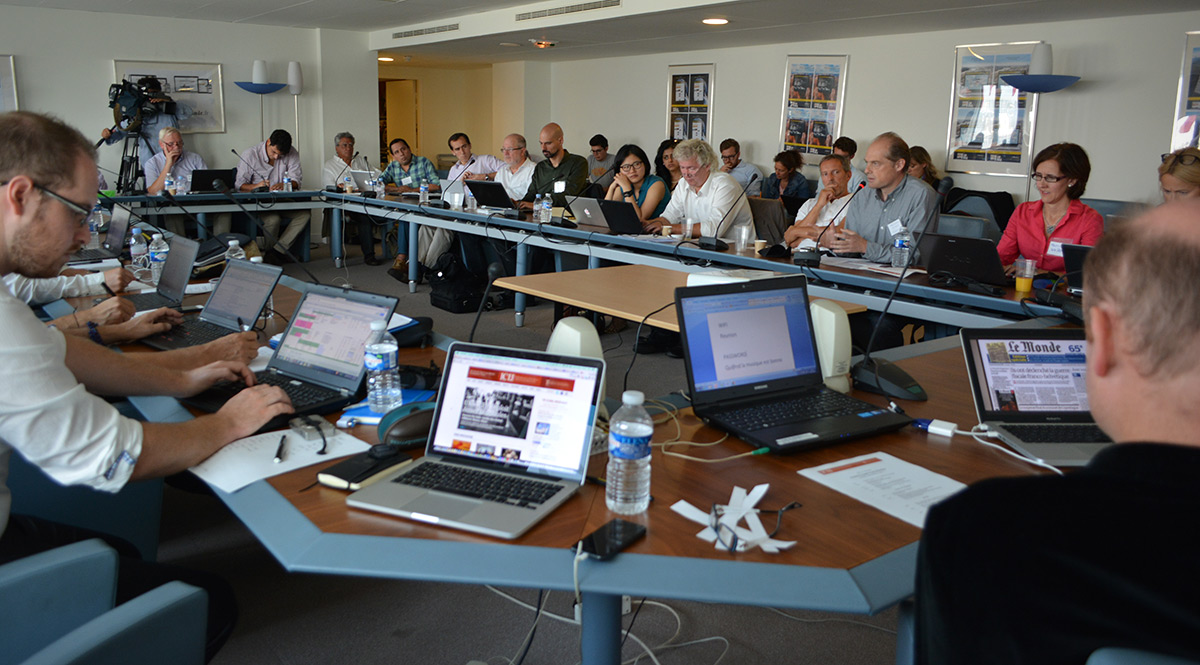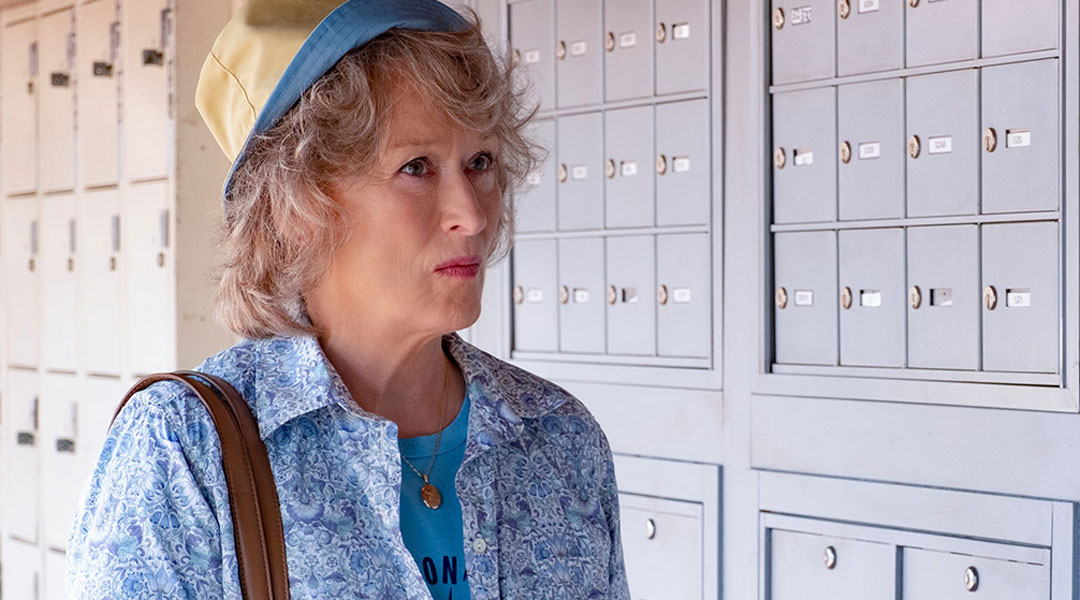Collaborative journalism – particularly across borders – has helped re-empower journalists at a critical moment in the history of the profession, according to the International Consortium of Investigative Journalists member and author Brigitte Alfter.
For her new book on cross-border collaborative journalism, Alfter interviewed some of the pioneers of the craft, and created a step-by-step guide for the next generation of aspiring journalists to follow. Here, she shares some of the insights she gathered along the way.
Even though collaborative journalism has existed for a long time, it feels like we’re in the midst of a golden era. What are the motivating factors behind the collaborative culture in journalism today? Why collaborate?
The recent surge in cross-border collaborative journalism is very much driven by journalists themselves. The idea of setting up ICIJ, for example, in the 1990s, was need-driven – as an interview for my book showed. Journalists were freelancing or working with new nonprofits, emancipating themselves from media corporations and establishing their own networks to do the kind of journalism they found important.
Today, we see a whole new structure of formal and informal networks of journalists collaborating on all levels. Formal networks like the ICIJ, OCCRP, EIC or Investigate Europe exist side-by-side and within the larger informal networks, where colleagues gather at a national, continental or indeed global level, for example at the European Investigative Journalism and Dataharvest Conference or the Global Investigative Journalism Conference.
What unites us is one experience: The power of publication. Previously we had this on a national level. We could bring topics to the political agenda in the local or national realm. Today, we need to reach out far beyond that. In recent years we have started to see the full power of cross-border journalism. Global tax avoidance and fraud, for example, have been brought to the global political agenda through cross-border journalism projects.

The power of cross-border collaborative publication was first realised by individual journalists and now more and more large media, too: Without committed colleagues in other countries, we never get the necessary insight into those countries, nor the sources, the historical background, the access to information and documents, the nuances of language or culture.
Merely translating from one language to another does not engage citizens, because the storytelling traditions and local discourses vary so widely. In some parts of the world legal and security concerns constitute another argument for cross-border collaboration: an international team may provide extra security, and a media partner in a country with strong protection of freedom of expression – such as the United States first amendment – may allow for some additional legal protection.
These are key motivations listed by my interviewees – and it’s obvious: Together we’re stronger. But working together is a professional task, and can be demanding.
How has the nature of collaborative journalism changed in recent years?
We are professionalizing. A lot!
I’ve practiced cross-border collaborative journalism since I co-founded the Farmsubsidy.org project in 2005. Back then internal communications, ethical discussions, and project management were completely improvised. One challenge at a time. That’s how professions are developed, of course.
If cross-border collaborative journalism was at an experimental stage in the 1990s and 2000s, it is settling into the mainstream in the 2010s. And we are getting more professional still. We now see a pluralism of regional and global networks with different shapes and purposes, we also see an emerging infrastructure for cross-border journalism and collaborative journalism in general. Scholars and journalism schools are looking into the method and begin to integrate it into journalism education. We are now beginning to focus on ongoing challenges, such as how to integrate cross-border collaborative journalism in journalism education, or carving out new editorial roles such as the editorial coordinator and so forth.
Surely, we are far from having solved all challenges: What about legal threats against entire teams and networks – there is very little case-law and the weakest-link-problem may yet have to be addressed. And what about competition? Further, we see emerging work about the danger of media capture. If we believe that networked journalism strengthens the power of publication, it will be tempting for interest groups, business groups, states or others to try to capture entire networks of journalists. We thus have to become much better at understanding the nature of our new networks to maintain our independence and to avoid being instrumentalized.
But all this is part of the further professionalization. We now have so many journalists who have good experiences with cross-border and collaborative practice… why would they give that up? These will be the journalists who push the professionalization onwards.
How do journalists balance the desire for “exclusive” content with the potential benefits of collaborating?
We’re working our way towards a new balance between “collaborative” and “competitive,” I think. Or maybe rather: We have started using collaboration and competition in a more targeted way.
Many journalists – particularly the elder among us – were socialized in an extremely competitive media landscape. We would not share anything with other journalists. In interviews for the book, some told me about their struggle to let go of their inner “lone wolf.” Today, there is a more nuanced use of competition and collaboration. Competition can be stimulating or necessary – think of news journalism! But more journalists also consider collaboration as a genuine opportunity. Today, we are just as proud to receive a journalism award with our team as when we’re alone. Maybe even happier – because you can celebrate the award with precious colleagues!
Basically, the collaborative mindset means to respect each other, and to be willing to understand differences while not giving up one’s own identity.
Your book focuses on cross-border collaboration, but are there other types of collaboration? How can junior reporters get a start with collaborative journalism?
This is one of the most fascinating experiences in this work: The collaborative mindset, the network mindset.
In the research for this book I studied literature from other disciplines. Journalists have little tradition of collaboration, probably due to our socialization in news media and competing for exclusive news by the minute. But in business sociology or in culture studies, for example, I found highly relevant material on networking processes, on how to collaborate in diverse teams while still maintaining the editorial goal. Journalists are decades behind business when it comes to networking and collaborating and working across cultures; in business sociology such studies were initiated in the 1970s. Luckily, this is easily accessible information – and very, very fascinating.
Basically, the collaborative mindset means to respect each other, and to be willing to understand differences while not giving up one’s own identity. In a cross-border team I have to respect that journalism traditions may be different elsewhere. I may find it enriching and fascinating to work with colleagues from different parts of the country, of the world so I can learn from them, or I may find I come from a tradition with a more developed practice in one field or the other, so they may be interested in learning from me. In any case, I must not give up the ethical and legal guidelines of my own country, because that’s what I owe my audience.
These years, I see the collaborative mindset transferred from cross-border to local journalism in the European countries where I follow such developments, and in the U.S.
What are some of the best examples of collaboration that you’ve seen?
Uhhh, there are so many: Big ones, small ones, special ones.
The big ones, of course, are setting the global agenda. That’s promising for everyone who believes in the necessity of journalism as the Fourth Estate. ICIJ has been pioneering global agenda-setting with large-scale cross-border journalism not least since their 2013 Offshore Leaks investigation, followed by Lux Leaks, Panama Papers and more. Other networks have had big scoops too: the current money laundering series coordinated by OCCRP, or the Football Leaks research with ever new revelations by the EIC network.
There are also smaller collaborative efforts, a growing number of them. You will not hear about them globally, but they are not less important. There is the ad-hoc four-country team unveiling exports of arms likely to end in war torn Yemen. Or the eight-country team exposing workers’ rights abuses in the European transport sector, prompting politicians to action. Or three students of journalism hooking up with a senior journalist for an ad-hoc project, where they uncovered slave labour in elderly care and the obscure business structure behind it – leading to a debate in at least one national parliament on the day after publication.
How about the worst? Are there projects where collaboration is the wrong approach? Does collaborative journalism ever fail?
Cross-border and other collaborative journalism can be fabulously powerful. Yet it does not come as a one-size-fits-all solution. It’s like other journalism methods. You do not use data analysis when the best way to the information is one or several in-depth interviews with a key source. Similarly, collaboration might not be the most appropriate tool for every journalistic task. Any good collaboration needs to hold a promise of a win-win for each and all team members, otherwise you need to look for another team or another research method. It is important to think across borders – national or other – but cross-border journalism can be cumbersome, so you only use it when relevant.
The important thing is not the success or, indeed, the failure. The important thing is what you take away from a collaborative project, and how you use this experience to improve your journalism skills and improve our profession. In the book I break cross-border collaborative journalism down into single steps, so you can dive into each individual step, learn from the pioneers of the craft, and get an understanding of important considerations for each moment of that work process.
What’s next for collaborative journalism? Are there any new trends emerging?
Right now, I see several developments. A mainstreaming, of course, where cross-border methods are applied by more and more journalists, media, and where journalism schools have started picking up on the topic. Then the development of more sophisticated networks, and finally a growing use of collaboration between various groups, not only among journalists and across borders. We’re about to surmount a lot of different borders!
We’re now seeing different types of network develop. You have a small editorial team across 10 countries, like Investigate Europe. You have a big team of journalists and data journalism experts specialized in investigations and in coordination, like ICIJ or OCCRP. You have groups of media joining forces and sharing a coordinator and an IT-infrastructure, like EIC. I would call this the “pluralism of networks” – network structures are developed to function in different contexts, with different funding sources, with different purposes for their journalism. This may sound a bit nerdy – and I guess it is (or perhaps let it be called “highly specialized”). And super interesting. The data journos among us are acquainted with some networking theory – here we can apply it to ourselves. I hope that scholars in journalism studies will help us understand how to organize our work better.
On collaboration between groups: We now see examples of journalists and scholars systematically collaborating and trying to figure out how to cross these professional borders in order to better share knowledge. In Germany, there is an annual conference, SciCAR, where data journalists and academics gather to collaborate. We see journalists collaborating with civil society groups – which can be tricky in some countries, where it can be considered dangerous to be too close to advocates or activists. And then we have, of course, a lot of cooperative projects, where audiences are partners or co-owners and often involved in the editorial process from crowdsourcing to actually contributing text. We had an entire panel on that during the European Investigative Journalism Conference & Dataharvest in May.
I see a lot of cross-border and other collaborative projects in the future. I’d even say I see it as a basic competence all journalists should be introduced to in their education – at the same level as interview technique, fact-checking or journalism ethics.
What has been invented cannot be uninvented. What journalists have developed in terms of collaborative competencies over the past years, is part of the profession. We will use it again – because it works.



